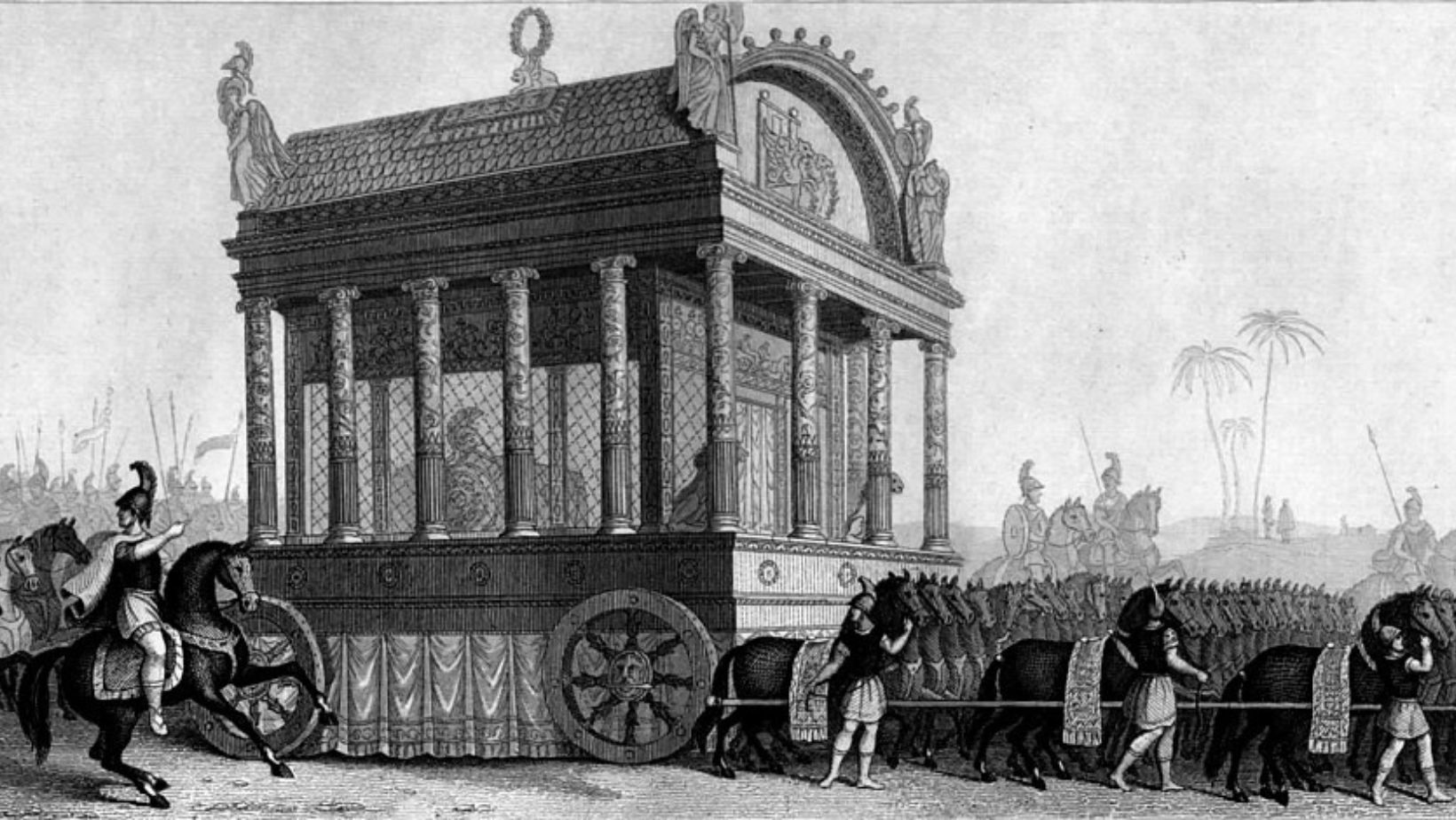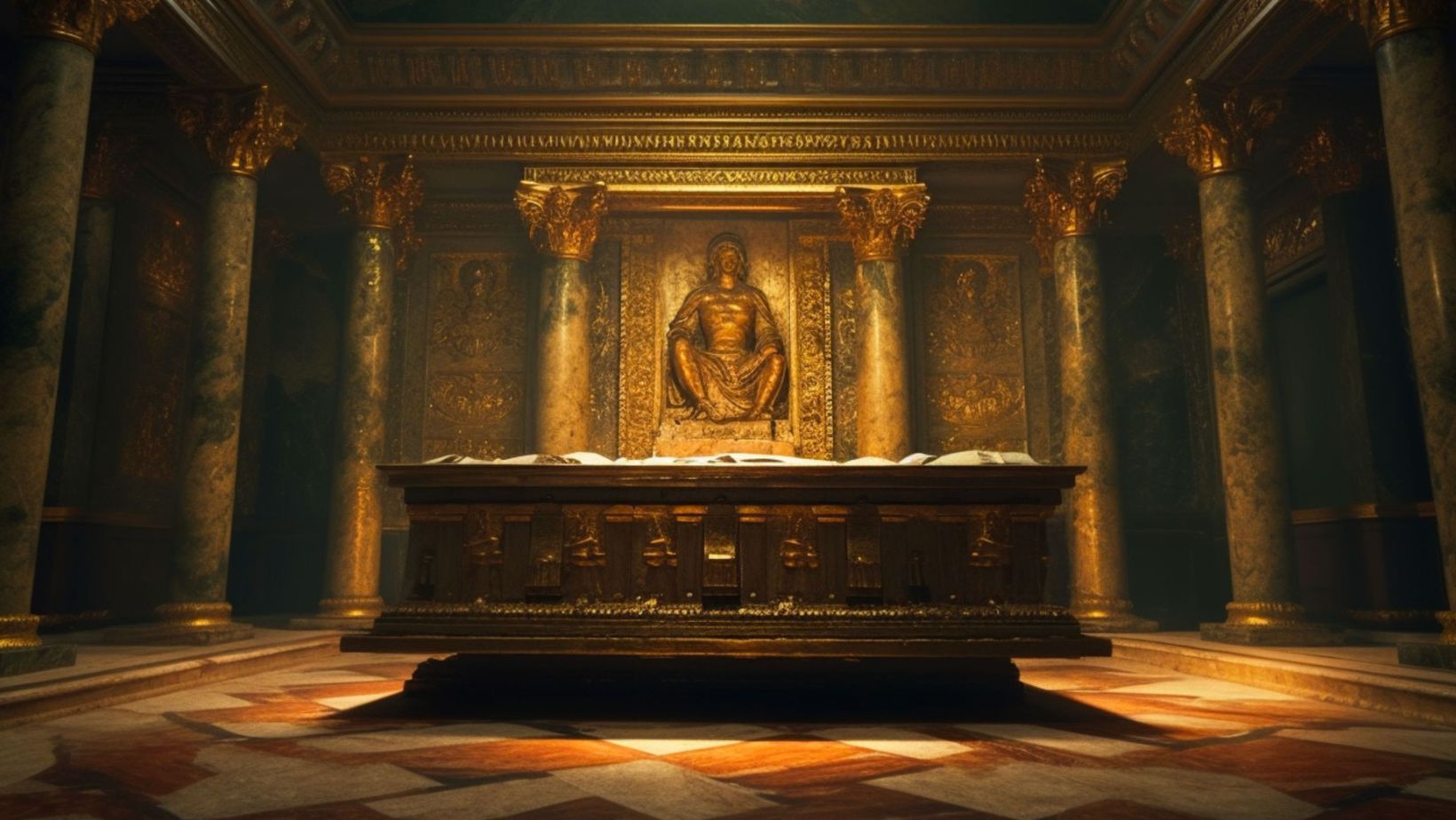Have you ever caught yourself pondering the unforgettable impact left behind by one of the most legendary figures in history? Yes, I’m talking about Alexander the Great and specifically, his well-preserved state after passing. The tale behind Alexander the Greats body preservation isn’t just a snippet from an ancient textbook; it’s a fascinating dive into historical practices that boggle modern minds. How did they manage such a feat in 323 BCE without today’s technology? It turns out, honey might have played more than just a culinary role back then.
This isn’t merely trivia for historians but sparks curiosity among us all. Imagine achieving something so monumental that people centuries later are still trying to piece together how you were remembered.
Table of Contents:
- The Death and Burial of Alexander the Great
- The Lost Tomb of Alexander
- Ptolemy’s Role in Preserving Alexander’s Body
- The Mummification and Preservation of Alexander’s Body
- The Tomb of Alexander in Alexandria
- The Legacy of Alexander’s Tomb
- Conclusion
The Death and Burial of Alexander the Great: Alexander the Greats Body Preservation

When Alexander the Great died in 323 BCE at the young age of 32, he appeared to have given little thought to what might happen to his empire or his body after his death.
Yet so great was the quarrelling in the immediate aftermath that Alexander’s body was reportedly left unattended for many days in the Babylonian heat. Legend has it that upon returning to the corpse, everyone found it untouched by decay.
Alexander’s Final Days: Alexander the Greats Body Preservation
Alexander the Great died in Babylon in 323 BCE. Perdiccas, the highest-ranking officer in Babylon, then ordered Alexander’s body to be embalmed and placed in a golden coffin.
The Location of His Death
The ancient city of Babylon, where Alexander drew his last breath, was a far cry from his homeland of Macedonia. His untimely demise left his vast empire in a state of uncertainty and turmoil.
Preparations for Burial
Despite the initial neglect of Alexander’s body, Perdiccas recognized the importance of properly preserving the great conqueror’s remains. The embalmment process and the golden coffin were the first steps in a long journey for Alexander’s body.
The Lost Tomb of Alexander: Alexander the Greats Body Preservation
It was the Ptolemies of Egypt who acquired his body and built him a tomb in Alexandria that became a landmark of the city for centuries. However, the conqueror’s tomb mysteriously vanished from the historical record and the quest to rediscover it has possessed countless people ever since.
The Mystery of the Missing Tomb
For a tomb that once held the body of one of history’s most renowned figures, its disappearance is a perplexing mystery. The last confirmed sighting of Alexander’s tomb was by the Roman emperor Augustus in 30 BCE.
Theories on the Tomb’s Location: Alexander the Greats Body Preservation
Scholars and adventurers have proposed various locations for Alexander’s final resting place, from the Siwa Oasis in Egypt to St. Mark’s Cathedral in Venice. However, no conclusive evidence has been found to support these claims.
Andrew Chugg, a renowned Alexander historian, has suggested that the conqueror’s original tomb may have been located in the temple of Nectanebo II in Saqqara, Egypt, before being moved to Alexandria.
The Significance of the Lost Tomb
The tomb of Alexander the Great was not merely a final resting place; it was a symbol of his power and legacy. Its disappearance has only added to the mythical status of the great conqueror.
Ptolemy’s Role in Preserving Alexander’s Body: Alexander the Greats Body Preservation
Ptolemy, one of Alexander’s most trusted generals, played a crucial role in the fate of the conqueror’s body. His actions would shape the legacy of Alexander for centuries to come.
Ptolemy’s Seizure of the Body
Recognizing the symbolic importance of Alexander’s remains, Ptolemy intercepted the funeral procession and brought the body to Egypt. This bold move set the stage for the Ptolemaic dynasty’s rise to power.
The Journey to Egypt
The journey of Alexander’s body from Babylon to Egypt was not a simple one. Ptolemy had to navigate the treacherous political landscape of the time, fending off rival generals who sought to claim Alexander’s legacy for themselves.
Ptolemy’s Motivations: Alexander the Greats Body Preservation
By securing Alexander’s body, Ptolemy aimed to legitimize his rule in Egypt and establish himself as the true successor to the great conqueror. The possession of Alexander’s remains was a powerful symbol of authority in the ancient world.
The Mummification and Preservation of Alexander’s Body
Once in Egypt, Alexander’s body underwent the ancient ritual of mummification, a process that would ensure his physical preservation for eternity.
Ancient Egyptian Mummification Techniques
The ancient Egyptians were renowned for their sophisticated mummification techniques, which involved removing internal organs, drying the body with natron salt, and wrapping it in linen bandages. Alexander’s body likely underwent a similar process.
The Role of the God Amun: Alexander the Greats Body Preservation
Alexander had a strong connection to the Egyptian god Amun, whom the Greeks equated with Zeus. The mummification process may have included rituals and prayers to Amun to ensure the conqueror’s safe passage into the afterlife.
The Importance of Preservation in Ancient Egypt
For the ancient Egyptians, preserving the physical body was essential for the soul’s survival in the afterlife. By mummifying Alexander’s body, Ptolemy ensured that the great conqueror would endure for eternity.
The Tomb of Alexander in Alexandria: Alexander the Greats Body Preservation
After its journey from Memphis, Alexander’s body found its final resting place in a magnificent tomb in the heart of Alexandria.
The Location of the Tomb in Alexandria
Ancient sources suggest that Alexander’s tomb was located in the royal quarter of Alexandria, near the Ptolemaic palace complex. The exact location, however, remains a mystery.
Some scholars believe that the tomb may now be underwater due to rising sea levels and the subsidence of the Alexandrian coastline over the centuries.
Descriptions of the Tomb: Alexander the Greats Body Preservation
Although no detailed descriptions of Alexander’s tomb have survived, it was undoubtedly a magnificent structure befitting a king and a god. The tomb likely featured a grand entrance, ornate columns, and intricate sculptures depicting Alexander’s life and conquests.
The Nabi Daniel Mosque Connection
In the heart of modern-day Alexandria stands the Nabi Daniel Mosque, which some believe may hold clues to the location of Alexander’s tomb. The mosque’s crypt is said to contain the remains of the prophet Daniel, but some speculate that it could also be the site of Alexander’s lost tomb.
The Legacy of Alexander’s Tomb

Although the physical tomb of Alexander the Great may be lost to history, its impact on the ancient world and its enduring legacy continue to captivate the imagination of people across the globe.
The Tomb as a Pilgrimage Site
During the Ptolemaic period, Alexander’s tomb served as a pilgrimage site for those who wished to pay their respects to the great conqueror. The tomb was not only a place of reverence but also a symbol of the Ptolemaic dynasty’s legitimacy and connection to Alexander.
Famous Visitors to the Tomb
Several notable figures from antiquity are said to have visited Alexander’s tomb, including Julius Caesar and Augustus. These visits demonstrate the enduring fascination with Alexander and the power of his legacy.
The Enduring Fame of Alexander
Despite the disappearance of his tomb, Alexander the Great’s fame has only grown over the centuries. His military genius, his vast empire, and his larger-than-life personality continue to inspire and intrigue people from all walks of life.
The search for Alexander’s tomb may continue, but his legacy as one of history’s greatest figures is secure.
Key Takeaway: Alexander the Greats Body Preservation
Alexander the Great’s body underwent remarkable preservation techniques, involving embalming and a golden coffin, reflecting ancient rituals and the high value placed on his legacy. His tomb, once a symbol of power in Alexandria, remains lost to history despite its significance as a pilgrimage site for many notable figures.
Conclusion: Alexander the Greats Body Preservation
The story of Alexander the Greats body preservation unfolds like an age-old mystery novel – layers upon layers waiting to be peeled back by those eager enough to look beyond surface-level facts. We’ve walked through corridors dimly lit by history’s torch, exploring methods possibly used to keep Alexander looking almost as if he’d simply taken a long nap rather than embarking on his final journey over two millennia ago.
In this quest for knowledge about past preservation practices, we not only uncover secrets hidden in time but also gain appreciation for human ingenuity across ages – turning nature’s bounty into eternal memorials for greatness achieved during mortal bounds.
So next time you hear mention of great achievements or legacies left behind by legendary figures like Alexander The Great remember there is often more beneath their stories (and burial sites) ready to inspire awe and wonder in hearts open enough to receive them.

